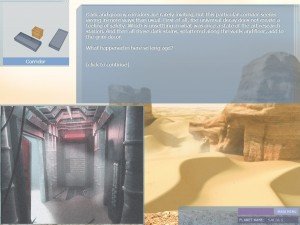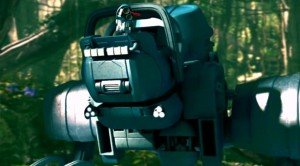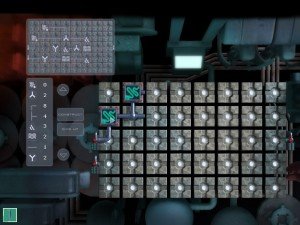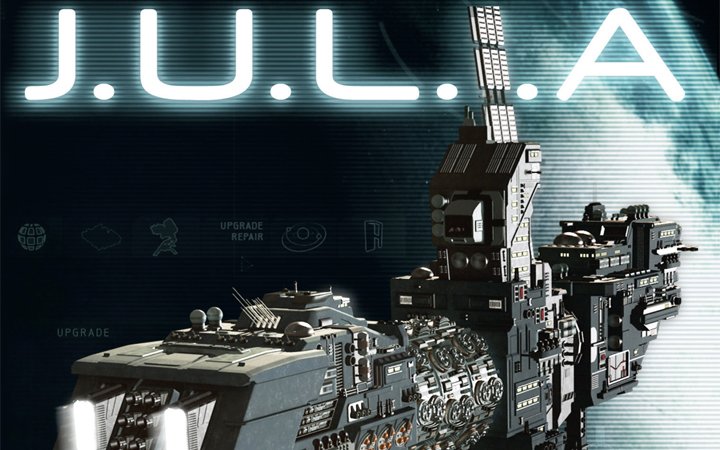J.U.L.I.A. is an adventure game from the small indie studio CBE. The game makes some very bold changes to the adventure game formula to keep up a consistent pace and prevent frustration. In addition, it also has a great storyline and an intriguing hook that will keep gamers engaged right through to the end of the adventure. While some of the changes made to the adventure game formula may have made J.U.L.I.A. a bit easy, it’s still a very intriguing piece of interactive fiction. If you enjoy both heavily puzzle-based adventure games and 2001: A Space Odyssey fan, J.U.L.I.A. would be worth a look.
adventure. While some of the changes made to the adventure game formula may have made J.U.L.I.A. a bit easy, it’s still a very intriguing piece of interactive fiction. If you enjoy both heavily puzzle-based adventure games and 2001: A Space Odyssey fan, J.U.L.I.A. would be worth a look.
The storyline is one of the best encountered in the genre. J.U.L.I.A. heavily borrows from the 2001: A Space Odyssey playbook. Sure, the AI of this tale is far more benevolent than the psychotic HAL, but the tale of monoliths, evolution, long forgotten alien civilizations, and trapped space scientists hits a comfortably familiar beat for Kubrick fans. You play as Dr. Rachel Manners, a scientist who is woken from cryogenic sleep by J.U.L.I.A., your shipboard AI. Apparently, the rest of your crew has disappeared after a mission down to the planet that you find yourself above, and the ship is a short time away from completely failing after an asteroid used your engine as a target. Using an interface suspiciously built to look like a series of logic puzzles, you have to repair your ship and solve the mystery of your missing crew with the help of J.U.L.I.A. and a robotic apparatus known as Mobot. By sending Mobot down to the planets below, you can piece together the mystery of the tragedy that befell this solar system hundreds of years before.
Even though J.U.L.I.A. seems like a gender-swapped version of 2001, the plot manages to veer away from the most obvious beats. Sure, there’s at least one cliché “heart wrenching” moment, but the vast majority of the game’s twists are excellent. The game drops just enough hints to allow you to believe you’ve guessed the twists, but repeatedly reveals that there’s more to the plot than you originally thought. You don’t feel cheated, because the hints were accurate, but you still feel surprised. It’s a smart way to construct a narrative, so I have to commend the team at CBE for the skilled storytelling. However, the multiple endings do present an issue; they, like far too many games, literally come down to a choice at the very end. Still, it’s a good choice that presents clear arguments for both sides, and I wouldn’t say there’s a simplified “Good Ending” or “Bad Ending” in this case.
originally thought. You don’t feel cheated, because the hints were accurate, but you still feel surprised. It’s a smart way to construct a narrative, so I have to commend the team at CBE for the skilled storytelling. However, the multiple endings do present an issue; they, like far too many games, literally come down to a choice at the very end. Still, it’s a good choice that presents clear arguments for both sides, and I wouldn’t say there’s a simplified “Good Ending” or “Bad Ending” in this case.
The story is mostly presented through talking heads and dialogue screens, so if you’re not a patient person willing to sit through long conversations, you might want to look elsewhere. All the voice actors are solid, even the text-to-speech Microsoft SAM program that provides the voice of Mobot. The only really eyebrow-raising voice is the narrator, who reads out the description of each scene you encounter. He sounds vaguely like a ghostly David Attenborough that should be explaining the habits of gazelles instead of the scene at hand. Still, it’s all very good for a non-native, English localization, with only minor typos and one continuity error marring an otherwise fine script.
 J.U.L.I.A. is heavily influenced by adventure games of the past, but particularly puzzle-based adventures like The 7th Guest. Like it’s spooky ancestor, J.U.L.I.A. revolves around travelling from room to room, or more specifically, planet to planet, solving puzzles in each area. Unlike prior adventures like The 7th Guest, the puzzles are all sensible and closely linked to the plot. Each interface J.U.L.I.A. draws up for the puzzles you encounter makes sense in terms of the game’s narrative, and the puzzles provide much needed gaps to keep the story elements well-paced. The puzzles themselves are not nearly as challenging as older adventure games, and I only found myself stuck once or twice, but never completely baffled. Most of the puzzles are quite fun, while a few are more time consuming and annoying than anything. It’s nice to see that the developers generally present unique challenges without going back to the tired tropes of many adventure game logic puzzles.
J.U.L.I.A. is heavily influenced by adventure games of the past, but particularly puzzle-based adventures like The 7th Guest. Like it’s spooky ancestor, J.U.L.I.A. revolves around travelling from room to room, or more specifically, planet to planet, solving puzzles in each area. Unlike prior adventures like The 7th Guest, the puzzles are all sensible and closely linked to the plot. Each interface J.U.L.I.A. draws up for the puzzles you encounter makes sense in terms of the game’s narrative, and the puzzles provide much needed gaps to keep the story elements well-paced. The puzzles themselves are not nearly as challenging as older adventure games, and I only found myself stuck once or twice, but never completely baffled. Most of the puzzles are quite fun, while a few are more time consuming and annoying than anything. It’s nice to see that the developers generally present unique challenges without going back to the tired tropes of many adventure game logic puzzles.
The puzzles are the only really important part of the gameplay, as there is next to no outside navigation. The closest thing the game has to exploration is the planet-side encounters with your Mobot, which play out as simple “Choose Your Own Adventure” stories. There’s no inclusion of pixel hunts, no question of where you need to be at any time; just a series of plot elements that drives you forward into each puzzle. The narrative is fairly non-linear, as you can visit the planets in nearly any order, but unlike most adventure games, there is absolutely nothing distracting you from the logic puzzles. While it does remove a lot of the exploration many adventure game fans love, it does prevent the game from hitting a frustrating wall. It seems like the recent trend in adventure games is figuring out how to make them more fun and less frustrating, and J.U.L.I.A. certainly takes a stab at this age-old problem. While it does make the game a bit easy, it does wonders for the pacing and plot.
distracting you from the logic puzzles. While it does remove a lot of the exploration many adventure game fans love, it does prevent the game from hitting a frustrating wall. It seems like the recent trend in adventure games is figuring out how to make them more fun and less frustrating, and J.U.L.I.A. certainly takes a stab at this age-old problem. While it does make the game a bit easy, it does wonders for the pacing and plot.
J.U.L.I.A. is an adventure game deeply rooted in the history of the genre, but is also not afraid to move away from elements that don’t work in a modern game. The story isn’t exactly mind-blowing stuff, but it’s unique and quirky when compared to most modern sci-fi games. It’s also presented very well, with top notch pacing. The $24.95 price tag might be a little steep for six to eight hours of largely hands-off adventure gameplay, but the game itself is certainly a solid, enjoyable adventure title.
Rating: 









This review is based on a press review copy of J.U.L.I.A. provided by CBE Software.


